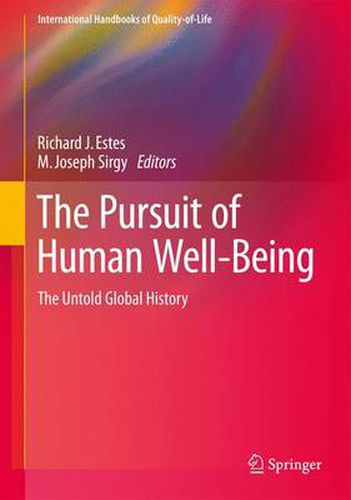Readings Newsletter
Become a Readings Member to make your shopping experience even easier.
Sign in or sign up for free!
You’re not far away from qualifying for FREE standard shipping within Australia
You’ve qualified for FREE standard shipping within Australia
The cart is loading…






This handbook informs the reader about how much progress we, the human race, have made in enhancing the quality of life on this planet. Many skeptics focus on how the quality of life has deteriorated over the course of human history, particularly given World War II and its aftermath. This handbook provides a positive perspective on the history of well-being. Quality of life, as documented by scientists worldwide, has significantly improved. Nevertheless, one sees more improvements in well-being in some regions of the world than in others. Why? This handbook documents the progress of well-being in the various world regions as well as the differences in those regions. The broad questions that the handbook addresses include:
What does well-being mean?
How do different philosophical and religious traditions interpret the concept of well-being within their own context?
Has well-being remained the same over different historical epochs and for different regions and subregions of the world?
In which areas of human development have we been most successful in advancing individual and collective well-being? In which sectors has the attainment of well-being proven most difficult?
How does well-being differ within and between different populations groups that, for a variety of socially created reasons, have been the most disadvantaged (e.g., children, the aged, women, the poor, racial, ethnic, and sexual minorities)?
$9.00 standard shipping within Australia
FREE standard shipping within Australia for orders over $100.00
Express & International shipping calculated at checkout
This handbook informs the reader about how much progress we, the human race, have made in enhancing the quality of life on this planet. Many skeptics focus on how the quality of life has deteriorated over the course of human history, particularly given World War II and its aftermath. This handbook provides a positive perspective on the history of well-being. Quality of life, as documented by scientists worldwide, has significantly improved. Nevertheless, one sees more improvements in well-being in some regions of the world than in others. Why? This handbook documents the progress of well-being in the various world regions as well as the differences in those regions. The broad questions that the handbook addresses include:
What does well-being mean?
How do different philosophical and religious traditions interpret the concept of well-being within their own context?
Has well-being remained the same over different historical epochs and for different regions and subregions of the world?
In which areas of human development have we been most successful in advancing individual and collective well-being? In which sectors has the attainment of well-being proven most difficult?
How does well-being differ within and between different populations groups that, for a variety of socially created reasons, have been the most disadvantaged (e.g., children, the aged, women, the poor, racial, ethnic, and sexual minorities)?